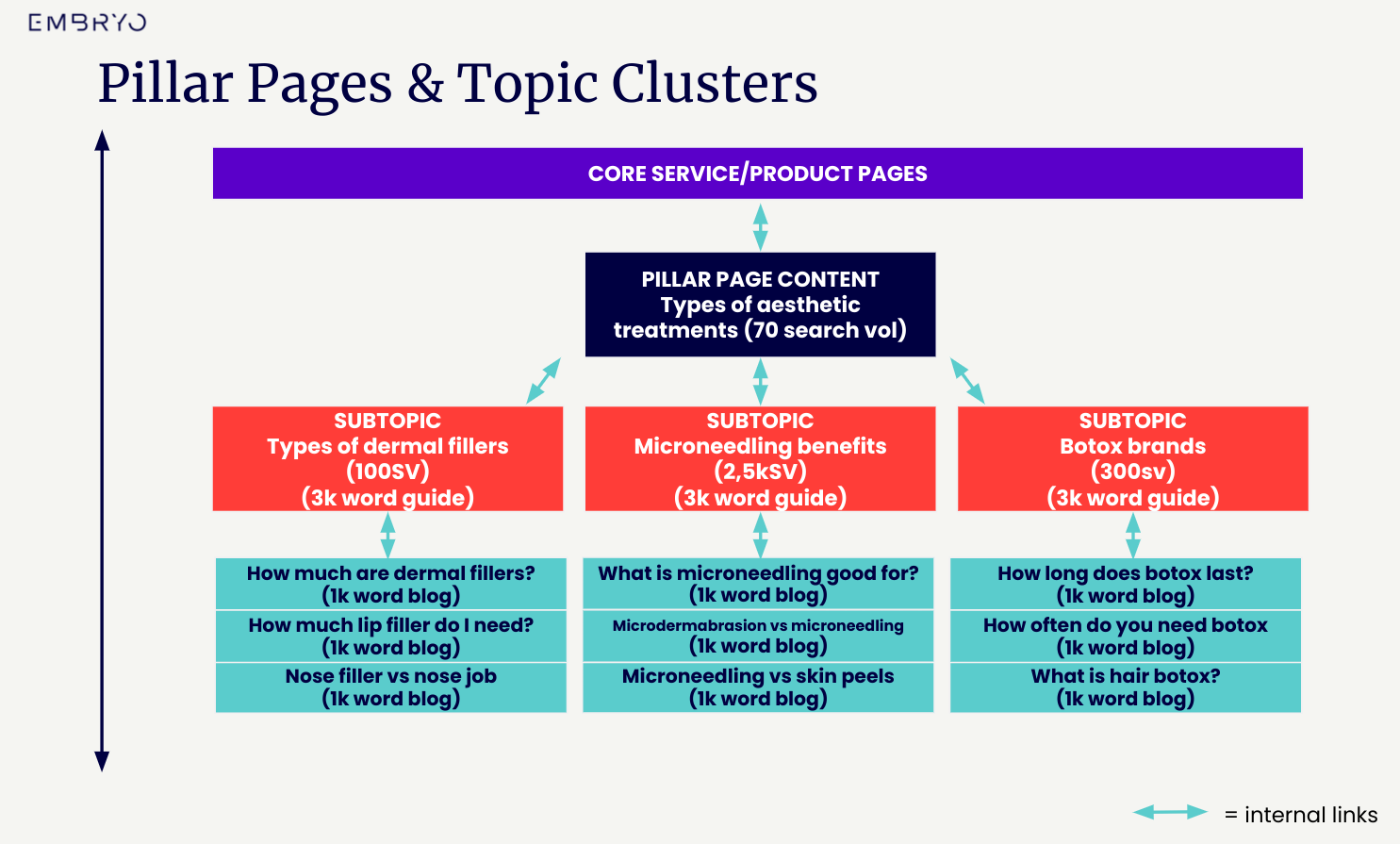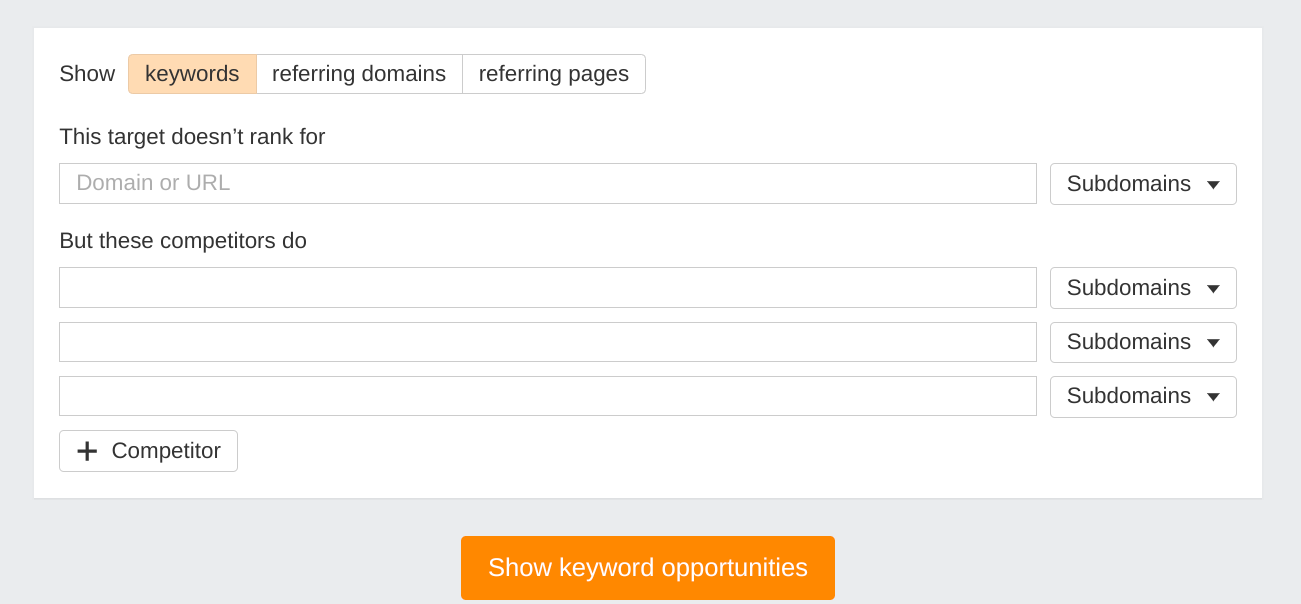
6 tried and tested content ideation tips for your website

Chances are you’re here because you need content ideation tips, are running out of strategy ideas, or perhaps you’ve never even attempted one. You’re not alone either – 13% of marketers admit that developing a content strategy is one of their biggest challenges.
Whether you’re new to creating a blog schedule or simply have run out of ideas, you’ll finish this blog with some fresh tips to bring to the table.
Having a carefully crafted content marketing strategy in place can improve traffic and conversions. In fact, businesses with an active blog produce 67% more leads on average than those that don’t post blog content.
So, now you understand how important it is to get content on-site, it’s time to figure out how.
Let’s dive into those all-important content ideation tips!
Content ideation tips to keep your blog active and inspiring
Content ideas can come from an abundance of places, you just have to know where to look. Whether it’s from your audiences’ feedback, your sales teams’ data, keyword research tools or trending news, there are plenty of excellent sources for pulling together a great content plan that engages your audience and brings in quality traffic.
Content ideas should include various types of content for different personas and journey points. At the core of all marketing strategies is a deep understanding of the user journey, their pain points and desires and meeting their expectations with thoughtfully crafted content.
It’s vital to recognise that your content strategy is a living, breathing thing that must adapt and evolve in correlation with your audiences’ needs and business changes. Stay on top of trends, keep a close eye on competitor activity, and be proactive and willing to change routes when required.
Create topic clusters
The process of creating a content infrastructure involves producing cluster pages that link back to your key pillar pages. These clusters consist of multiple 600-1,500 word pages that are topically related, all targetting various long-tail keywords with lower search volumes. By building this structure, you create a network of content that strategically connects back to pillar pages. The diagram below should help to visualise this structure:

The visualisation above represents the optimal hierarchical arrangement of pages on a website. In this example, we’re using an aesthetics company. The ‘clusters’ target long-tail keywords with lower search volume, internally linking back to the more competitive pages. This creates a halo effect, passing authority and showing search engines and users that your site has useful information and answers to every related question, forming a knowledge hub for each subject matter.
In terms of ideating these clusters, think of every question and subtopic relevant to each aspect of your business. Next, categorise them into subfolders using keyword research to help you organise and align your content ideas. Doing this interconnects your content, elevating user experience and SEO performance, as opposed to building standalone pieces.
Keyword research
Keyword research tools are a good, reliable place to start for generating content ideas and forming topic clusters for your blog section. Using keyword research software allows you to create data-led strategies, letting search activity and demand guide the blog content you curate.
As you can see below in the screenshot taken from AHRefs Keyword Explorer, it’s fairly easy to gather long-tail keywords to find out what users are looking for in their Google searches. You can export this data and sift through it to find the most relevant keywords to your service, solution or industry. When selecting these keywords, you can then form a content plan that targets them.

Top tip: Be mindful of keyword difficulty as this indicates the competitiveness of a keyword. Whilst we recommend taking this metric with a pinch of salt, you should review results pages for your chosen keywords to determine your ranking potential. For example, a new website with a low domain authority is unlikely to outrank long-established, powerful sites with a domain rating of 80 or higher.
For more information on how to carry out keyword research, read our related guides!
Content gap analysis
Conducting a content gap analysis is the process of identifying missing content pieces that your competitors already have. The difference between this process and keyword research is that you essentially uncover additional areas to write about from competitors in your industry. This method is particularly useful if you find yourself running out of keyword ideas.
This analysis involves taking multiple competitors’ sites and comparing their keyword rankings and URLs with your domain. Tools such as the competitor analysis on AHRefs is a fast and effective way of digging out this data:

You can instruct the tool to present you with keywords that you don’t rank for at all, as well as keywords that you rank on page 2+ for. We suggest importing the keyword data from each of your competitors into a spreadsheet so you can effectively ‘sieve’ through ideas and rule out any irrelevant keywords. Use this data to create new pages or optimise existing pages if you find you already have content that’s perhaps not performing as it should.
The trick here is to fill all the content gaps, leaving no leaf unturned to position your website as the beacon of information. How can you achieve topical authority if you’re leaving useful content unwritten? Take ideas and make your content ten times better than your competitors’ content.
Optimise existing content
Expanding on the content ideation tip above, a significant portion of your content strategy will likely involve optimising, enhancing and expanding existing content.
Great content doesn’t always have to be new. If your website has been live for a while, it’s important to run content audits to identify improvements for existing pieces. For a quick win, start with a live URL and update the copy. You’d be surprised how quickly a keyword can jump from position 15 to 1-5 after quality optimisation.
Here are just a few ways you can do it:
- Update statistics: Blogs from 2021 and prior may be outdated. Go back and update the page with recent data and a few extra sections to freshen it up. Depending on the nature of the topic, it can be worthwhile showing that the blog has been updated in the page title. For example, ‘How much does an SEO agency cost? 2024 pricing’.
- Expand wordcount: Many SEO wordcount studies suggest that blogs lower than 1,500 words struggle to rank (again, topic-dependent). If you have content that could be more comprehensive and compelling, revisit it. Struggling to figure out which blogs need extra attention? Evaluate the word count on similar ranking pieces. If competitors are producing guides of 4,000 words, you should mimic this approach until you’ve covered everything you can on the topic.
- Best practice optimisation: Optimising content can sometimes be as simple as sprinkling in a few extra keywords in the headings and body text. Content best practices are always changing, so it’s important to stay ahead of them. If you notice any previous stellar rankings starting to fall off a cliff, it could be that your content no longer follows best practices. Perhaps the keyword usage was originally too ‘spammy’, so you can go back and amend the piece.
We love this handy optimisation checklist by Jake Ward on Linkedin:
Top tip: Revisit some of your best content and put it through the process of ‘crafting and curation,’ as our Chief Innovation Officer, James Welch, likes to call it. Embed relevant YouTube videos, add engaging imagery, and refresh the author bio. These updates can greatly enhance your E-E-A-T signals.
Internal sales and customer service research
Not all of your content needs to be led by keywords and SEO research. Your website should ultimately display genuinely meaningful and useful content to your target audience. And what better way to do this than by gathering insight directly from that audience?
No matter what industry you are in, all customers experience issues, pain points and confusion. They all go through a similar online journey to educate themselves and discover the best solutions.
Your sales and marketing teams should have a good idea of what questions your audience tends to ask and will be able to feed into your content strategy from a customer-centric perspective. You can then begin to craft content that addresses their concerns and needs, guiding them toward solutions and building connections with potential customers.
Top tip: FAQ sections, glossaries and troubleshooting guides work really well to address common questions and concerns.
‘Linkable’ content ideas
Quality content creation can inevitably lead to a stronger backlink profile and domain authority. When crafting content, think about frameworks and topics other websites will want to see and link to. People generally link to unique, interesting and exciting content. So, how do you achieve this?
Focus on producing the following content types:
- Long-form content: Evergreen guides on big subject matters will always generate interest. When you fill them with expert quotes, unique insights, and engaging infographics, these guides become valuable reference materials that other websites will want to link to.
- Original data and research: If you’ve got time and resources to create an original data-driven piece, do it! Original research is incredibly valuable and often attracts backlinks, especially when supported by a digital PR team that can handle outreach.
- Interviews: Whether it’s your internal team or an external expert you can collaborate with, produce a transcript of an interview full of insightful advice and unique opinions. This would attract backlinks from industry blogs and news sources.
Top tip: Use SEO tools to assess the top-performing links of your competitors to identify the types of content that attract the most backlinks. At Embryo, we use our innovative tool, Needle, to gather this data and discover trending, ‘linkable’ content across any given industry. Reach out to us if you’d like a preview!
Content ideation made easy by Embryo
It’s fair to say that content ideation can come from a vast array of sources—all it takes is data, time, and a touch of creativity. If you’re still struggling to develop a strong content strategy, our experts are here to help.
We provide clients with data-driven strategies that skyrocket rankings and generate quality traffic. If this sounds like something your website is missing, get in touch today.



